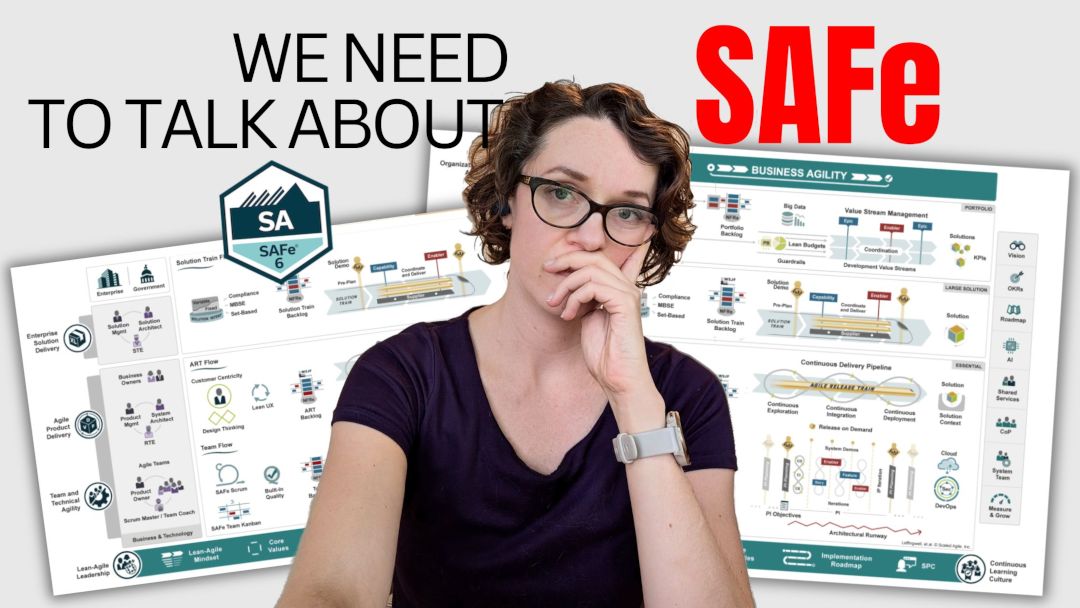Learn how I helped a growing start-up to build up their product and teams through well-planned and managed processes and structures.
The Problem
The company had a great run with Agile that was working well in their primary Scrum team. As the customer base kept growing and demands on the product started growing with it, the company needed to scale the work to stay relevant.
Due to the fact that their Agile implementation was done naturally on a small scale, it was not ready for growth. The organization already started to see some red flags when it came to poorly defined processes and lack of alignment between teams and departments.
Without a proper foundation for their Agile implementation, further scaling would result in convoluted organization processes and political power play that would slow the development, increase technical debt, and eventually would not allow the company to quickly respond to new customer demands.
Key Challenges
We needed to address a few areas that are essential to team scaling.
Prioritization & Planning Chaos
The constant change in priorities was slowing down progress as the team was unable to fully finish work before switching to a new important task. Work often got pushed in without consideration for complexity and effort required or other work that was still in progress. The team would often agree to take in work even if they didn’t believe it was possible to complete it.
In addition, it seemed that several groups of people had the ability to reprioritize work and were able to override each other’s decisions.
Tech Debt Accumulation
The growing tech debt was slowing down the team as every new feature was taking considerably more time to develop and fix. The biggest concern was growing in the testing area due to fragile flaky, long pipeline runs and lots of manual testing required.
The technical debt was not properly documented and hence was not being addressed which led to issues found late in development increasing in number and complexity
Lack of Alignment
Teams lacked clear documentation and agreed-upon processes, which led to inconsistent quality and difficulty managing the development lifecycle.
Since the teams grew quickly and were split into different parts of the product work, no written agreements on processes to follow between teams were created. Some teams were following their own rules without creating alignment with the main product team. While on a small scale it wasn’t a bit issue, with further growth of the company it would present huge challenges.
Team Lead Dependency
There was a high dependency on team leads for decision-making and task execution. This reduced ownership among team members and increased waiting times.
Some estimation and planning decisions were made without properly involving the team members doing the work which led to unpleasant surprises when the work took longer than expected or communicated to stakeholders.
Development in Silos
The teams weren’t fully cross-functional as QA and developers worked as two different mini-departments. They were not working in sync. The hand-off process between these teams led to misaligned priorities and rework. This also impacted the consistency of estimations.
This also led to shifting the responsibility for quality to QA which resulted in many defects being found too late in the process without enough time left to fix them before the end of the Sprint. This, of course, created a lot of frustration on both sides.
The Solution
The overall objective for the engagement was to get the teams ready to scale and split without negatively impacting their ability to continuously deliver new features.
Actions taken
It was important to bring in more clarity and create alignment across all organizational levels. Some actions that we’ve taken to accomplish this included:
- New Prioritization Process: Established prioritization guidelines to prevent random reordering of tasks. Created a roadmap to align work across teams. Established an ongoing roadmap review process with the leadership teams.
- Tech Debt Documentation & Reduction: Introduced a tech debt backlog and created a plan for addressing it on a regular basis. Identified an appropriate amount of time to dedicate to addressing tech debt each Sprint and coaching Product Owners to plan for it accordingly.
- Automated Testing: Solidified testing automation to increase efficiency and reduce errors. Worked with the QAs to create a plan of action to gradually reduce the amount of defects found late in development and increase throughput.
- Process Alignment: Introduced a clear Definition of Done, documented workflow from inception to completion, and streamlined the release candidate process to ensure alignment between QA and development.
- Team Empowerment: Created cross-training and knowledge transfer processes to increase team ownership and reduce reliance on team leads. Started running regular technical workshops with the team to increase their autonomy.
- QA and Dev Alignment: Rebuilt the teams to be cross-functional to include both QA and development work, ensuring that all teams shared the same sprint goals and cadence. Built communities of practice to keep the focus on technical excellence in each area.
Outcomes
After only a few months of work, we were able to achieve significant improvements and split the teams without impacting productivity. By the end, the general implementation of Agile values and principles was strong with high levels of self-motivation and continuous improvement from the teams’ side.
More Predictable and Consistent Delivery
Thanks to more structured workflows and progress visibility, the team was able to plan more confidently. Their estimations became more consistent enabling more predictability in delivery.
Stakeholders had clarity into the daily work and progress and were able to set achievable delivery expectations. This also resulted in fewer interruptions and fewer surprises for everyone involved.
Faster Development Cycles
Tech debt was identified, prioritized, and incorporated into sprints, leading to fewer issues down the line and improved development speed.
Since enough time was dedicated to automation, the team was able to reduce the pipeline deployment time and minimize the reliance on manual testing prone to human error. Instead, the team was able to properly plan and execute the testing part of the workflow with the help of developers who became more familiar with testing requirements.
Easily Scalable Processes
With better alignment across the board around processes and goals, the company was able to start scaling its teams and products. This resulted in a smooth transition from one to multiple teams and the hiring and onboarding of new team members.
The foundation was created to allow the company to grow further and continue to scale their products.
Reduced Dependencies and Wait Times
Thanks to better knowledge transfer and overall alignment, the risk associated with siloed information has been greatly reduced. This meant that the teams became more self-managing, making sound decisions as they progressed through their work. This liberated tech leaders’ time to focus more on tech strategy and infrastructure.



